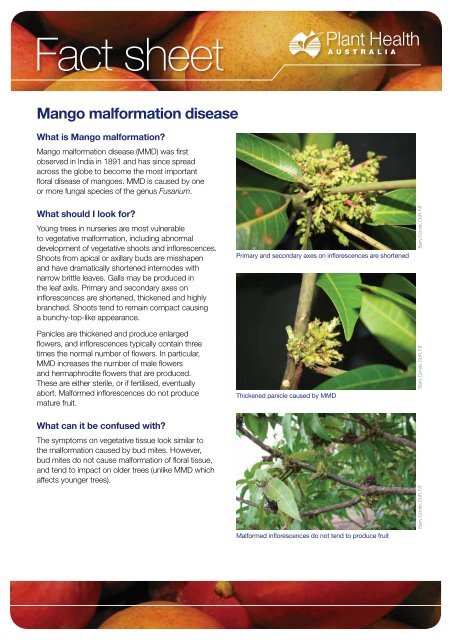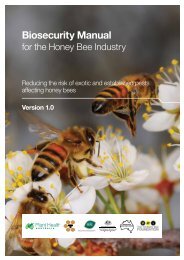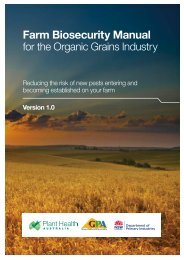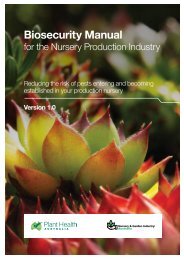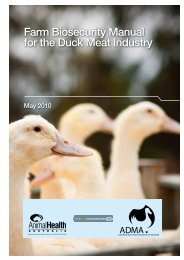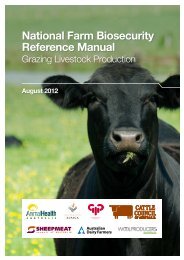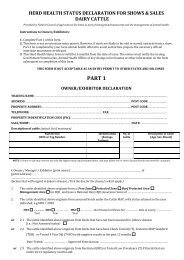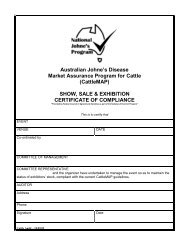Orchard Biosecurity Manual for the Mango Industry - Farm Biosecurity
Orchard Biosecurity Manual for the Mango Industry - Farm Biosecurity
Orchard Biosecurity Manual for the Mango Industry - Farm Biosecurity
Create successful ePaper yourself
Turn your PDF publications into a flip-book with our unique Google optimized e-Paper software.
Fact sheet<br />
<strong>Mango</strong> mal<strong>for</strong>mation disease<br />
What is <strong>Mango</strong> mal<strong>for</strong>mation?<br />
<strong>Mango</strong> mal<strong>for</strong>mation disease (MMD) was first<br />
observed in India in 1891 and has since spread<br />
across <strong>the</strong> globe to become <strong>the</strong> most important<br />
floral disease of mangoes. MMD is caused by one<br />
or more fungal species of <strong>the</strong> genus Fusarium.<br />
What should I look <strong>for</strong>?<br />
Young trees in nurseries are most vulnerable<br />
to vegetative mal<strong>for</strong>mation, including abnormal<br />
development of vegetative shoots and inflorescences.<br />
Shoots from apical or axillary buds are misshapen<br />
and have dramatically shortened internodes with<br />
narrow brittle leaves. Galls may be produced in<br />
<strong>the</strong> leaf axils. Primary and secondary axes on<br />
inflorescences are shortened, thickened and highly<br />
branched. Shoots tend to remain compact causing<br />
a bunchy-top-like appearance.<br />
Panicles are thickened and produce enlarged<br />
flowers, and inflorescences typically contain three<br />
times <strong>the</strong> normal number of flowers. In particular,<br />
MMD increases <strong>the</strong> number of male flowers<br />
and hermaphrodite flowers that are produced.<br />
These are ei<strong>the</strong>r sterile, or if fertilised, eventually<br />
abort. Mal<strong>for</strong>med inflorescences do not produce<br />
mature fruit.<br />
What can it be confused with?<br />
The symptoms on vegetative tissue look similar to<br />
<strong>the</strong> mal<strong>for</strong>mation caused by bud mites. However,<br />
bud mites do not cause mal<strong>for</strong>mation of floral tissue,<br />
and tend to impact on older trees (unlike MMD which<br />
affects younger trees).<br />
Primary and secondary axes on inflorescences are shortened<br />
Thickened panicle caused by MMD<br />
Mal<strong>for</strong>med inflorescences do not tend to produce fruit<br />
Barry Conde, DoR, NT Barry Conde, DoR, NT<br />
Barry Conde, DoR, NT


